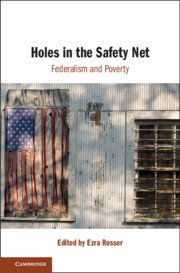Mapping Inequality, Digital Scholarship Lab (last visited Mar. 26, 2021). Introduction below:
Among the thousands of area descriptions created by agents of the federal government’s Home Owners’ Loan Corporation between 1935 and 1940, the one that was written for what is now called the Carver Heights neighborhood in Savannah, Georgia, stands out. HOLC staff members, using data and evaluations organized by local real estate professionals–lenders, developers, and real estate appraisers–in each city, assigned grades to residential neighborhoods that reflected their “mortgage security” that would then be visualized on color-coded maps. Neighborhoods receiving the highest grade of “A”–colored green on the maps–were deemed minimal risks for banks and other mortgage lenders when they were determining who should received loans and which areas in the city were safe investments. Those receiving the lowest grade of “D,” colored red, were considered “hazardous.”
…
As you explore the materials Mapping Inequality, you will quickly encounter exactly that kind of language, descriptions of the “infiltration” of what were quite often described as “subversive,” “undesirable,” “inharmonious,” or “lower grade” populations, for they are everywhere in the HOLC archive. Of the Bedford–Stuyvesant in Brooklyn, for instant, agents explained that “Colored infiltration a definitely adverse influence on neighborhood desirability although Negroes will buy properties at fair prices and usually rent rooms.” In the Tompkinsville neighborhood in Staten Island, “Italian infiltration depress residential desirability in this area.” In a south Philadelphia neighborhood “Infiltration of Jewish into area have depressed values.” The assessors of a Minneapolis neighborhood attributed the decline of a “once a very substantial and desirable area” to the “gradual infiltration of negroes and Asiatics.” In Berkeley, California, an area north of UC Berkeley “could be classed as High Yellow [C], but for infiltration of Orientals and gradual infiltration of Negroes form south to north.” Such judgments were made in cities from every region of the country. The “infiltration of negroes” informed the grades of neighborhoods in Birmingham, Oakland, Charlotte, Youngstown, Indianapolis, Cleveland, Los Angeles, and Chicago; the “infiltration of Jews” or “infiltration of Jewish families” in Los Angeles, Binghamton, Kansas City, and Chicago; the “infiltration of Italians” in Akron, Chicago, Cleveland, and Kansas City. The infiltration of Polish, Hungarian, Czech, Greek, Mexican, Russian, Slavic, and Syrian families was cataloged in other cities, always lowering the grade of neighborhoods.
These grades were a tool for redlining: making it difficult or impossible for people in certain areas to access mortgage financing and thus become homeowners. Redlining directed both public and private capital to native-born white families and away from African American and immigrant families. As homeownership was arguably the most significant means of intergenerational wealth building in the United States in the twentieth century, these redlining practices from eight decades ago had long-term effects in creating wealth inequalities that we still see today. Mapping Inequality, we hope, will allow and encourage you to grapple with this history of government policies contributing to inequality.





